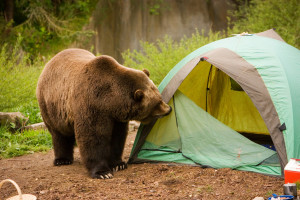 One of the biggest problems that face most youth programs is the lack of funds. Whether it’s a large organization, a small non-profit, government provision or a faith-based organization there just doesn’t seem to be enough money to go around. And the thought of grant writing can be very daunting for many youth workers. I mean really, we do the program bit and it’s a general stereotype (that is correct in my opinion) that most of us hate paperwork. We don’t want to sit at our desk or computer and fill out paperwork- we want to do the work!
One of the biggest problems that face most youth programs is the lack of funds. Whether it’s a large organization, a small non-profit, government provision or a faith-based organization there just doesn’t seem to be enough money to go around. And the thought of grant writing can be very daunting for many youth workers. I mean really, we do the program bit and it’s a general stereotype (that is correct in my opinion) that most of us hate paperwork. We don’t want to sit at our desk or computer and fill out paperwork- we want to do the work!
Sadly, like exercising or taking the time to go to the bathroom, it’s a necessary evil (that’s just me then that finds going to the bathroom a complete waste of time during my busy day?!).
You never know when you may need a skill like basic grant writing. No, you may not need to write hundreds of grants for millions of dollars. But you may need to help the teens in your program write a mini-grant (this is a way that is becoming more popular to fund projects for youth, by youth) or assist your own fundraising department in their preparation of a grant. You may also be wanting to start your own youth program and go it alone and for that you will need funds (unless you’re independently wealthy).
I recently had the opportunity to attend a grant writing workshop and here are the top three tips I took away from a foundation grant writer:
1. Seek other funding options.
I’ve been learning about this over the years while preparing to get my own non-profit off the ground. You can’t rely on grant funding alone. Firstly, because grants come and go (and are getting increasingly more competitive). Also, most grants now want to know how are you going to use this ‘seed money’ to get your project going and then make it sustainable when the grant finishes. Funders don’t want to see ‘get another grant’ on your paperwork. You need to focus on private donors*, major donors*, streams of revenue, etc. during your current grant cycle.
2. Figure out (before you apply) if your aims meet the funders goals (and if you don’t know- ask).
A lot of grant making organizations will sit down with you before you apply- in the case of my four local foundations they actually require it before application. You need to review their guidelines with a fine-toothed comb and if you have any questions or doubt about your program or organization fitting into their funding goals then pick up the phone and make a connection with a real person and get some answers.*
3. Give them what they ask for- no more, no less.
You know your organization and program so you’re going to be quick to say a lot about it and possibly skim over the grant management aspect of the application. Wrong. You need to do both, equally well and clearly, in your application to be in with a shot. According to the trainer its about 50% or less of a grant application that is the actual project. They really want to know how you are going to manage their funds. Remember- it doesn’t have to be lengthy, as long as you provide what they want there is no need to go on and on and on and on and on and on… well you get the picture. If you think something will enhance your grant or add clarity then include it (or even better- ask a real person at the organization about it first).*
* Bonus tip: There is both a science and an art to grant writing. The science is the basic application. The art is building relationships. You need to build relationships with funders, whether they are foundations, private donors or corporations. You need to keep in touch with them. Share your successes. Be honest about your shortcomings. An email won’t do. You need to get out there and talk to people. Send them notes and updates. If you do a newsletter, drop that in the mail to them. Keep that relationship open. Even if they can’t fund you right now, or in the future, they are going to know people who might be able to.
You can connect with us by:
- Signing up to receive our posts via email
- Following us on Twitter
- Liking us on Facebook
- Signing up to our RSS feed
 Today we have the 7th of our Hidden Gems – posts that you may have missed the first time that they were published.
Today we have the 7th of our Hidden Gems – posts that you may have missed the first time that they were published.

